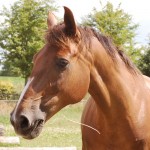 As I contemplate riding Pip and the preparations required for this, I feel a pressing need to take stock of our achievements – my mare’s but predominantly mine – and to reassess the direction in which I am travelling in order to clarify the “big picture” within which these preparations are occurring and to adjust course if necessary. This has partly been prompted by the achievement of a major milestone in my studies of horses and ways of helping them and their carers. While we are all probably aware of the importance of taking stock in theory, actually doing it again has been very educational. So how has this affected Pip, me and my perception of the point we are at?
As I contemplate riding Pip and the preparations required for this, I feel a pressing need to take stock of our achievements – my mare’s but predominantly mine – and to reassess the direction in which I am travelling in order to clarify the “big picture” within which these preparations are occurring and to adjust course if necessary. This has partly been prompted by the achievement of a major milestone in my studies of horses and ways of helping them and their carers. While we are all probably aware of the importance of taking stock in theory, actually doing it again has been very educational. So how has this affected Pip, me and my perception of the point we are at?
Pip
Let us start by taking stock of my preparations to ride my favourite horse. I had originally hoped to be riding her by now but first I had to contend with my failing her by focusing on the goal at the expense of our relationship as outlined in my post entitled To Ride or Not to Ride: Is This Really the Question?
Then there is the issue of her back, which Jason Wauters has described as sensitive. Vicki and I have both noticed that she seems to be stiff in the sacrum. There seems to be little movement around the lumbar area pelvic region, which makes it difficult for Pip to step under. This is probably mainly due to the fact that she was ridden skew for so many years. As a result she is reluctant to canter on the circle. I am inclined to devote more attention to this issue before venturing onto her back.
In my last straightness training lesson I also discovered that I have a major difference in approach with my instructor. It would appear that the model of pressure and release, which is so prevalent in horse training circles, is a very difficult one to let go of. Essentially, this approach requires the application of pressure to the horse until it yields to that pressure and responds as required, at which point it is rewarded with a release of that pressure. As such, it is a form of negative reinforcement, which research has shown to be a highly inefficient form of training compared to positive reinforcement.
Another shortcoming of this approach lies in the fact that, where the pressure is physical (that is, force), a horse’s natural response is to resist such pressure and not yield to it. More fundamentally, the application of pressure assumes the existence of compulsion, which is to say, the human compels the horse to do something. My question is whether such an approach is commensurate with the type of relationship which I want with Pip, namely, one based on my love and her trust, one in which she is a willing partner and not a yielding servant. This is not to say that I get it right all the time. I do not and Vicki can testify to this. What is does mean is that the guiding principle of our relationship (and hence also our training) must be appropriate.
Equine Touch
The milestone which I refer to above is the completion of my Equine Touch studies for the purposes of becoming a practitioner. From the time Vicki and I got back from our last Equine Touch course in England at the beginning of February until the end of May, each of us performed a total in excess of 60 Equine Touch sessions on more than 20 different horses. We were then required to compile detailed reports on the sessions involving each horse along with pictures and diagrams.
In addition, we had to complete written assignments on Equine Touch theory, and the anatomy and physiology of the horse. Towards the end of May we realised just how much work was involved and shut our business for about 10 days to clear the workload. To give you some idea of what was involved, I produced answers totalling 16,000 words, while Vicki managed 26,000 words (that is the equivalent of half a novel). Once that was all done, we still had an essay of no less than 2000 words to write. If anyone still has comments about just how easy it is to obtain an equine bodywork practitioner’s certificate, you really do not want to speak to me.
Another Equine Touch course
The reason for the rush to complete our studies lay in the fact that we needed to do so, if we wanted to attend a three-day Level 4 course with Ivana Ruddock, a vet and co-founder of the Equine Touch modality, in June. Although this course is not a requirement to become a practitioner, it is mandatory if one wants to stay up-to-date with the latest developments in this modality. As in the case of any discipline, true learning is an ongoing process and Level 4 is designed to introduce practitioners to the latest developments in Equine Touch.
Perhaps Ivana’s greatest strength is that she is capable of taking her knowledge of equine veterinary science gleaned not only from years of study but also regular dissections of horses, to help us understand how the various components of soft tissue (muscles, fascia, tendons and ligaments) work together and with the skeletal frame. Coupled with an awareness of equine biomechanics, this knowledge makes it possible for an Equine Touch practitioner to determine the most appropriate course of action when required. Personally, I also came away feeling rather excited, not only because of everything that I had learned about, more in particular, because I now have several more Equine Touch procedures, which I have good reason to believe are going to be highly beneficial for Pip.
Equine Touch conference
Immediately after the Level 4 course Vicki and I attended the ninth annual conference of the International Equine Touch Association (United Kingdom and Ireland), a two-day event held close to the venue of the course in the vicinity of Newcastle-upon-Tyne. Attended by numerous Equine Touch instructors and practitioners, mainly from the United Kingdom, but also a sprinkling from Ireland, the Netherlands and Germany, the conference represented a particularly useful way of meeting the wider Equine Touch community and staying abreast of developments affecting horses.
In addition to the Equine Touch component, the conference also featured an array of guest speakers talking about subjects as varied as horses in the care of the RSPCA, equestrian sport, the use of horses in the police force, animal communication, equine dentistry and myofascial release. It was rather distressing to hear the impact which the economic crisis has had on horses and their carers (about 75 cruelty cases some 10 years ago compared with in excess of 850 now, many of which involved abandoned horses).
At the risk of being critical
I must confess to having some difficulty listening to presentations on equestrian sports and the use of horses in the police force without any discussion of the ethical issues involved. The two speakers dealing with these issues were quite blunt in their assessment to the effect that what they make horses do is highly stressful. In one case we were informed that an eventing horse had torn its deep digital flexor tendon in one of its hind legs. Although it has now healed, all of the experts that had been consulted warned that it is likely to “go again” at any time. After informing us of this, the speaker then went on to assure us that the horse is still being ridden for competition purposes. Yes, the horse does receive Equine Touch but is it likely to be more effective in mitigating the risk of a re-occurrence of that injury, as – to paraphrase a Dutch proverb – me mopping up water while the tap is running? I was also left with the following question: what is in it for the horse?
What I greatly appreciated about the content of the conference, probably more than anything else, was Ivana Ruddock’s advice on when to break the rules in one’s approach to Equine Touch and her session on Lessons from Anatomy. If I have a wish list for a future conference, it would be to address what I came away with as the greatest need I currently experience, namely, for a thorough understanding of equine biomechanics.
Another Equine Touch course
Immediately after the conference Vicki and I attended a day-long equine mobilisation and stretching course. We learned how to help the horse mobilise its joints and stretch its muscles both passively and actively. Passive stretching involves the human stretching the horse’s muscles by bending and extending the limbs, while active stretching sees the human encourage the horse to stretch its own muscles with the aid of positive reinforcement. According to our instructors, research has revealed that consistent stretching exercises can help the horse increase the length and mass of its muscles to a significant extent.
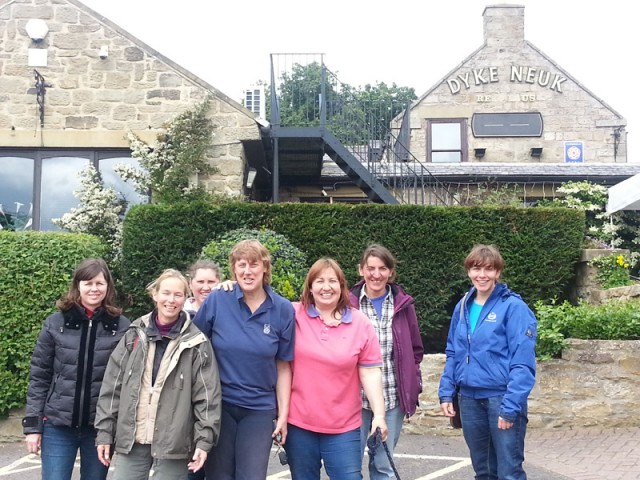
Students and instructors before the venue for lunch. Dutch speakers will be wondering what is on the menu.
We were very fortunate to have two Equine Touch instructors for the price of one. Emma Overend and Chris Wyllie impressed me greatly with their power of observation, knowledge of anatomy, physiology and biomechanics, and commitment to the wellbeing of the horse. I came away with the feeling that some of the procedures which I had learned, were going to be of tremendous benefit to Pip as we prepared for riding. Chris also opened her home to us after the course, where we enjoyed drinks and snacks before heading off to spend our remaining day in England playing tourist.
Playing tourist
My limited experience of English weather leaves me with no doubt as to why the English are capable of producing Monty Python and other instances of outlandish and oddball humour. The weather would drive you completely wacky if you did not. Alternatively, perhaps the weather has driven them so wacky that they do. What a surprise then for us to spend close to 10 days in England with only one brief sprinkling of rain. This must be some type of record. Martin and Sheila, our kind hosts who opened up their home for us and fed me beer and whisky when I joined them to watch the odd World Cup football match, told us that the north-east gets more sunshine than any other part of the country, an information byte that I thought odd, given that we were just a short way from the Scottish border.
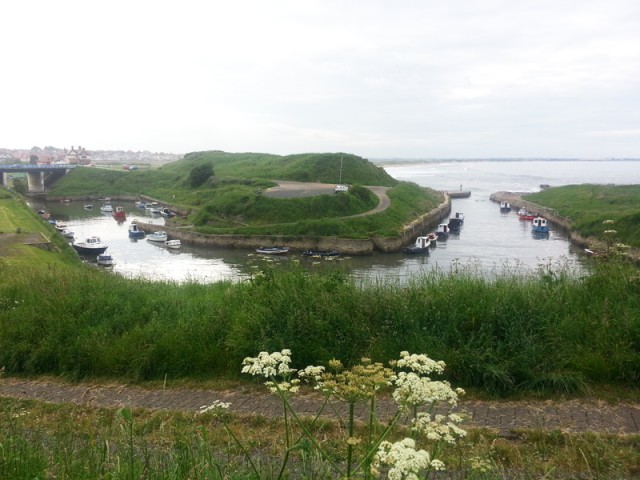
Seaton Sluice. The Kings Arms pub is off the picture to the right. So where are his legs or is he legless?
Whatever the case, Vicki and I spent some time during our visit playing tourist indoors and outdoors together with other conference-goers from the Continent. Being England, castles and pubs were high on the list, although we also got to see some lovely countryside and public gardens. One thing I cannot understand about the English is that with so many horses in the country, they have few bridle paths in the countryside, which means that hacking is largely confined to public roads, which can be a hazardous business, given the absence of shoulders alongside the tarmac and the locals’ penchant for growing hedges along the verge. The absence of bridle paths was rather reminiscent of Australia. In this respect we are particularly fortunate in the Netherlands. It may be a tiny country but bridle paths are to be found almost everywhere outside the urban areas.
Taking stock: the big picture
As mentioned, one of the assignments we were required to do by way of preparation to become Equine Touch practitioners involved writing an essay. The title was prescribed: What Equine Touch Means to Me. As I understand it, the aim of the essay is to help one reassess one’s decision to embark on the course, to assess what it has involved and to contemplate what being a practitioner may mean. Because such a course is always followed within the wider context of the student concerned, it inevitably entails reflection which extends way beyond Equine Touch. In this sense the essay serves as a vehicle to take stock of the situation in which Equine Touch plays a part: the big picture.
The essay which I wrote puts into a nutshell what my journey has been and how it is progressing now in the light of the experiences which are dealt with in this blog. As such, I would like to share it with you. Hopefully, it will give you a better insight into why and how I write what I do on this blog. In sharing it with you, I am conscious that mine is just one of the many, many stories that humans are living as they seek better ways of being with horses.
To Help Horses by Educating Humans:
What Equine Touch Means to Me
She is young, this student with the intent blue eyes, and eager, keen to get to the bottom of everything, to understand, to find direction in everything, to make sense of it all. How should I answer her questions. Perhaps … just perhaps, this is the way….
You ask me what has inspired me to learn Equine Touch and to become a practitioner of this modality. You ask me if I have faced any challenges during my training and whether I have overcome them. You ask me where I hope to take my Equine Touch practice and what my future plans are. You have many questions. Come, sit down and let me try to answer them. Perhaps I can best do so by telling you a story. Like all good stories, it starts with “Once upon a time…”.
Once upon a time there was a man. He was a disillusioned man, bitterly cynical but stubborn. His youth was hard compared to that of his peers but nowhere nearly as hard as those of most of his countrymen. He can still recall the innocent wonder with which he greeted the world, the treasured lessons he learnt at his mother’s side on the few occasions they spent together. The splendour of human creativity, the fragility of life, the miracle that is love, she taught him these and instilled in him a deep sense of fairness, which inevitably saw him always choose the side of the underdog. So deep was that sense that he spurned the frivolous pleasures of his fellow privileged students and threw himself headlong into the struggle for justice and equality in his troubled land. Some battles were won, while others were lost, yet each left its scars. He wore them proudly until he finally realised that the leaders in whom he had placed so much trust viewed him as a threat, because he challenged everyone who did not share that burning sense of fairness, including those leaders who showed that they were prepared to abandon the underdogs whom they themselves had once been.
Disillusioned, he too abandoned the struggle for the underdogs, turning instead to what many would regard as a normal life. But the lights had gone out for him. The innocence of his youth had withered and wilted like a dead bird caught in a barbed wire fence succumbing to its fate until it was little more than a decaying memory of feathers and bones. The joy of living had been snuffed out like a candle. All he was left with was the stubbornness which had got him this far, much to his uncomprehending astonishment. By that stage he had found refuge in a new country on the other side of the world. There he acquired an alien culture, fell in love with a foreign woman and then left. Together with the woman he loved, he stomped around the world from one continent to the next, searching for he knew not what. Eventually he thought that he had found it. A large, lush estate in the subtropics and two horses that soon became three to complement their menagerie of dogs and cats, this must be paradise, so he thought, until he found himself working so hard to live in paradise, so as to be able to work even harder in order to continue to live in paradise in order that he might work even…. So it was time to move again. At one stage he calculated that on average he had moved home every other year throughout his life.
The man knew a little about horses. From his early teens they had encroached on his consciousness not like other animals but rather as someone else’s property whom he was allowed to pet and ride from time to time. There were some magic moments: riding through the mist at the crack of dawn, galloping across a sun swept beach, sharing an illicit bottle of wine on horseback with other kids. Yet the so-called magic lay not in the horses but what humans did with them. This did not change much when finally, shortly after his fortieth birthday, the man finally came to have a horse of his own. He cared for it, rode it, fell off it and finally abandoned it, leaving his wife to assume responsibility for the hapless horse. He simply could not imagine what all the excitement was about. Did it not make more sense to get from A to B in a car or on a bicycle? After all, if the entire point of fraternisation with another species was the mutual joy that you could bring to each other’s life, what sense could there be in making a horse do something using restraints and instruments of force? The aim, it was explained to him by those patient enough to make the effort, is to learn how to do that with the lightest touch possible to the point that one merely has to think it. If that is so, the man asked himself, why then the need to ride the horse with spurs and two bits with enough leverage on one to be able to move the tower of London or so it seemed?
Then one day the man’s wife showed him a video of a Russian horseman doing remarkable things with a proud, muscled black stallion using nothing but a neck ring and a twig, a horse whom he treated as a friend, even when it challenged him physically. The man was in awe. Soon after that he was shown another video. Here too was a man doing remarkable things with a horse, a chestnut gelding, in the wild. Yet on his back or on the ground next to him, the horseman used no tack. He relied on nothing but his body and his words to guide the horse. It was clear that the horse had become a willing partner in their dance. A closer examination revealed that horse and human were so utterly and completely focused, the one on the other, that nothing existed for them beyond the dance they shared and what made it possible. Yes, the man was in awe again but this time he had a question. What, just what was it that made the dance of horse and human possible in the absence of any instruments of force and restraint? No sooner had he asked the question, then he saw the answer: trust. The horse trusted the human. But what had the human done and what was the human doing to earn the horse’s unconditional trust? The man did not know the answer to that question but he did know one thing: he wanted a relationship with a horse exactly like that and he was prepared to do what it took to achieve that. There and then he committed himself to learning what he as a human had to do for a horse to trust him in the same way that the chestnut gelding trusted his master.
And so he started out on a journey which took him everywhere and nowhere. He learned that the chestnut gelding was called Janosch and that his human’s name was Klaus Ferdinand Hempfling. The man set about studying all that the master who dances with horses had written and produced in the two languages that the man spoke. It dawned on the man that the horse knows how to be a horse but humans have forgotten how to be human, because the way in which they are brought up and educated dehumanises humans and alienates them from their humanity. The man discovered that horses have an unerring ability to detect such alienation or incongruence between who humans are in the moment they are before the horse and who they pretend to be. He saw that through their response to him his horses were telling him something about himself. And he realised that his horses were telling him that he had the propensity to be the very thing he did not want to be with those sensitive creatures: a nasty, petty little bossy creature who insisted that the horse do his bidding exactly when and how he required it. And he was ashamed.
Stubborn to the very core, the man insisted on learning how to overcome that failing. He read more publications, watched more videos, spoke to others who were on a similar journey. He learned from people who had personally studied with the master, which eventually included his wife, until finally, he too was ready to make the trip across the world to the island on which the great horseman lived. This time though it was not to be just any long-distance trip. The master who dances with horses had issued a public invitation to all who were interested to attend a year-long course with him in return for a fee equivalent to the price of a luxury car. Throwing caution to the winds, the man and his wife sold up and returned to the country on the other side of the world from which they had originally emigrated, taking a mare and an old dog with them en route to a year with the great master. Life-changing, the man knew instinctively that this is what it was going to be and he was right. What he was wrong about were the circumstances in which his life was to change.
For reasons that are best left unsaid, the man and his wife were denied entrance to the year-long course with the master who dances with horses. Suddenly they found themselves stranded in Europe with little more than a horse, a dog and a question which threatened to burn them with despair: What now?
Using the money they had saved for the course, they set about finding out how. The man instinctively knew that the essence of the answer to that question lay in the message that Hempfling had so unsuccessfully taught that, by his own admission, not one student of his had managed to replicate his ability to dance with horses in the course of more than twenty years. Undaunted, the man set out to find those former students and to study more closely what the great master preached. The more he learned, the more he realised the essential truth of what Hempfling was proclaiming: it is not the horse that needs to change if horse and human are to learn to dance with each other as willing partners but the human, and that it is not enough to know this. One must also live that change. He would have to regain his lost humanity. And he learned that in order to regain his humanity, he would ironically have to learn to be like the horse: fully conscious and focused in the here and now, just as Hempfling exhibited. But how could he learn to do this? Denied access to Hempfling’s school with its emphasis on body and spiritual awareness, and the tools they provided to help a human do just that, the man searched for alternatives and found them in the form of the teachings of Eckhart Tolle, the author of The Power of Now, and the eons-old discipline of Tai Chi. So he learned to stand and move from the core and he became aware of the need for intent and integrity to inform all of his actions. In the process he discovered that the key to life is living, and doing so every single moment as it happens, here and now. And so the man learned to be content.
A blog which the man had originally set up with his wife to report on their experiences leading up to and during the one-year course now became a vehicle for the man to write about his journey. In doing so he attracted readers from around the world who are on a similar journey and their feedback also proved to be invaluable, especially those who urged the man to learn from his horse. There was one small problem though: he did not have a horse. So the man went looking for a horse and found one, or thought he had. He admired Friesians and one was available, just over five years old. But the man had doubts, because another very different horse seemed to be entering his life at the time. A seventeen-year-old liver chestnut mare, she was a cast-off of seven former owners with issues that had everyone warning the man against procuring the horse, including his wife. Then the man recalled how he had made the trip across the world to return to Europe, how everything had worked out to make the trip smooth, how easy it had been to find a home for his family and his mare once they had arrived in the Netherlands, and how difficult everything had been in his effort to make it to Hempfling’s school. Was it not Hempfling who advised his students to look around for the hand of destiny at work, to recognise it, and to follow the path down which it beckoned, instead of fighting it, as he had done far too often for much too long in the past.
And so the man acquired the chestnut mare and endeavoured to do what everyone was urging him to do: learn from the horse. But how do you learn from a hypersensitive horse who is so easily intimidated, a creature whom you can get your way with any and every time you insist (even if it meant that she would career around like an automaton closed to any and all contact)? Much easier with his wife’s horse, who would rear erect all close to 600 kg towering over him. He found it much less of a challenge to adjust his actions to accommodate such momentous protest. The parameters were set for him. With the chestnut mare he had to set them himself and this meant digging deep to make demands of himself that his horse would never have dared to do.
So did the chestnut mare teach the man, as the blog commentators had insisted she would? If he had to be honest, really brutally forthright, he would have to confess that she did not. So what did she do? He considered the question and eventually came to the conclusion that all she did was assess him and his clumsy attempts to communicate with her, much less to dance with her and even less, to guide her through the steps. No, ultimately, the man was the author of his own learning but thanks to the horse, he was learning to ask the right questions. Once he had the questions, it was a cinch to find the answers. What was far more challenging was the search for a way to implement them.
I sense you beginning to fidget. Have you not asked me what has inspired me to learn Equine Touch and to become a practitioner of this modality? And am I not answering your question? Your eyes seem to harden. “Not really,” perhaps this is what you really suggest, that I have digressed. After all, what could my answer possibly have to do with your question?
Up until this point? Nothing on the face of it but perhaps everything if you allow me to finish. First I must tell you that the man had one more trip to make to learn another all-important lesson. For some time he had been aware of the existence of a Canadian, a man whom the Russian with the black, well-muscled stallion had appointed to serve as his international representative, yet someone who differed so much from his mentor as to be in a class of his own. An unassuming creature of extraordinary insight and sensitivity, Michael Bevilacqua came to horses quite late in life and yet has managed to do what no one at the peak of conventional dressage is capable of: help a horse to carry itself in natural collection on the ground with nothing more than a neck ring and a twig in an area in which the horse’s companions are grazing and which is large enough for the horse to escape the horseman if it chose to do so. His secret and the lesson the man learned from him? Love. If you love your horse as you claim to, simply let all your actions be guided by that love.
I see you flinch. Does this talk of love make you feel uncomfortable? What place could it possibly have in the need for a human to train the horse to walk, to trot, to canter, to gallop, to jump, to race, to spin around, to do a sliding stop, to…. Perhaps nothing. But is not that the point? Please, be patient just a little longer and you will see that the answers which are so long in coming are actually almost here. Let me continue.
The man looked at how far he had come on his journey and how important horses had been in bringing him so far. The quiet contentment that he had achieved was something he swore that he would let no one take from him again. He had found his soul again and was learning to reunite with it in the moment of living that is always now. And he had the horses to thank for this. He was so very grateful to them, that he decided to find ways of expressing his gratitude. The blog became one of those avenues. Then he found another: Equine Touch. He learned the move and the procedures, saw how the horses responded and knew that through his hands he had the ability to help them here and now. And so he dedicated himself to adding every part of that modality to his repertoire of skills and the only sure way of doing that, he decided, was to qualify as a practitioner.
This morning I looked in the mirror while I was shaving and there in my reflection I saw the man. He was watching me as intently as I was watching him. And he was smiling as I was, for we knew that we were one again.
You ask whether there were any challenges which I faced and overcame during my Equine Touch training. In all honesty I must tell you that there have been none to date, at least not anything that I would describe as a real challenge. Perhaps this has something to do with the challenging preparations that I experienced when learning to be with horses and to derive joy from their presence.
Finally, you ask where I hope to take my Equine Touch practice and what my future plans are, presumably in relation to this modality. My answer is partly prompted by the inspirational presence of the late founder of Equine Touch, Jock Ruddock. Although I never had the privilege of meeting him while he was alive, his touch may be compellingly felt throughout the Equine Touch study materials. Watching the practised movement of his hands across the horse, one can almost feel the relief that they bring to the animal as evidenced in its response. Besides being an accomplished practitioner, he is clearly also a committed educator and it is the educational vision of the Equine Touch Foundation as expressed in its mission statement which truly inspires me: To Help Horses by Educating Humans.
This is the mission to which I feel called, albeit not merely through Equine Touch. It is a mission that appeals to me first and foremost, because there is sufficient evidence to show that the vast majority of humans who have anything to do with horses have little idea of the nature of the creatures to whom they declare their commitment and what they are truly capable of. This was brought home to me again while writing up my final case studies. I was privileged to share three Equine Touch sessions with twenty different horses in two countries, including mares, geldings, ponies and one stallion. Not a single horse was left wanting by Equine Touch. The modality helped every single one of them, more often than not in more ways than one. In 50% of all cases it also visibly helped horses overcome pain. What absolutely horrified me though was that none of the owners were aware that their horses were experiencing pain. How is that possible? The first reason I think is because horses are such adept survivors. The second reason I have reason to believe lies in the fact that essentially most humans are not familiar with the essential being called equus ferus caballus in general and their horse in particular, and as a result they have come to accept the abnormal as normal. Education can change this.
The Equine Touch Foundation’s mission statement also appeals to me, because the modality is one which relies on communication and interaction between horse and human, and the very nature of such an interactive approach offers enormous potential for self-development. My limited experience reveals that helping horses by working with – as opposed to on – them has the capacity to transform the human as well as the horse. Allowing the horse to show you what to do in order to help it in every respect – not merely through Equine Touch – rather than insisting that the horse do what you demand, can help you to become the author of your own physical, mental, emotional and spiritual salvation not by seeking it but rather by seeking to help the horse achieve the very same. If it is the task of a human carer to help the horse do just that and love for the horse is the rationale for doing precisely that – as I would argue it is – what we do as equine carers becomes an expression of that love every time we do it. And as history has shown time and time again, loving, not merely expressing love, but actually living that expression in all we do with the horse cannot but bring joy to the human as well as the horse.
If at all possible, I would love to add the educational aspect of Equine Touch to my existing repertoire of skills through which I already try to help horses by educating humans and ultimately assist the latter as well. I am reliably informed that the educational focus was Jock Ruddock’s primary driving force behind Equine Touch rather than the development of a cadre of professional practitioners, and that he sought to help ordinary carers learn how to care for their horses by learning and applying this modality. It is this vision which I would like to help turn into reality and not merely for the seemingly ethereal reasons I have outline above. To be brutally honest, if I were to compare what I earn through my everyday work and what I could by being an Equine Touch practitioner, I must confess that the latter offers absolutely no financial incentive. At the practitioner level the only incentive I can find for Equine Touch lies in its being a gift to the horse. Educating horse carers by teaching them how to share the gift of Equine Touch with their horses may offer more of an earnings potential which would be significant enough to warrant a change of career. More importantly, it would help share Equine Touch with horses and owners far more rapidly and extensively than is currently the case, especially in a country such as the Netherlands, where horse owners would be far more inclined to spend money on learning how to share Equine Touch with their horse than to pay someone else to do so. As a trained and experienced teacher, albeit of a different discipline, I sincerely hope that the Equine Touch educational programme has the dynamism required to fulfil the Equine Touch Foundation’s mission statement. If it does, it will not find me wanting. Does that answer your questions?
The young woman looks up from her notepad, where she has been jotting down points while listening. She frowns as she considers the question. Does it?
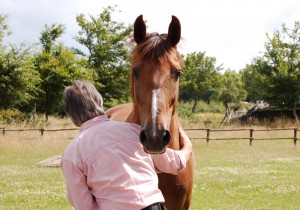

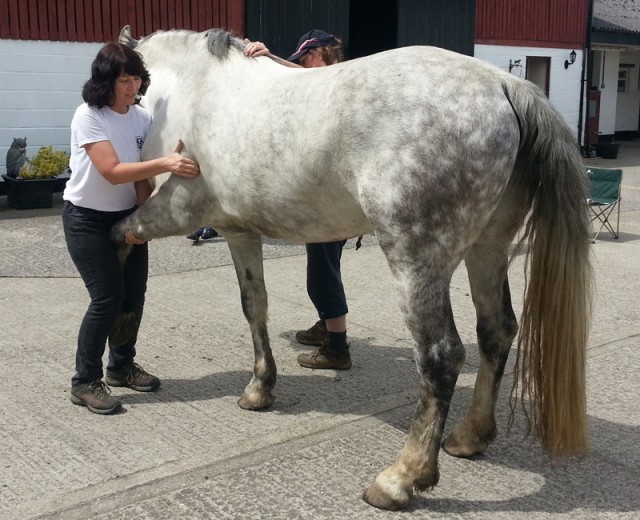
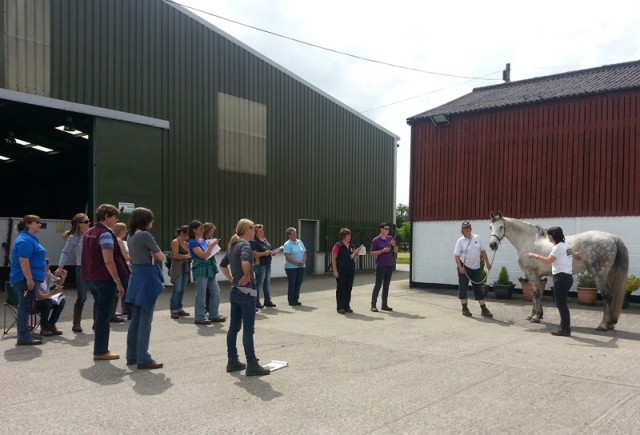
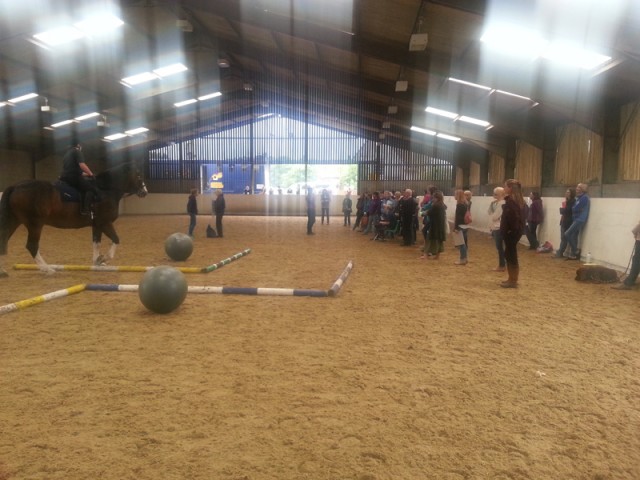


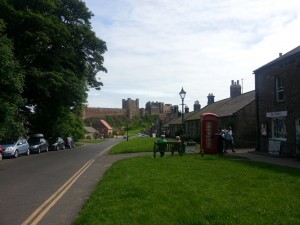


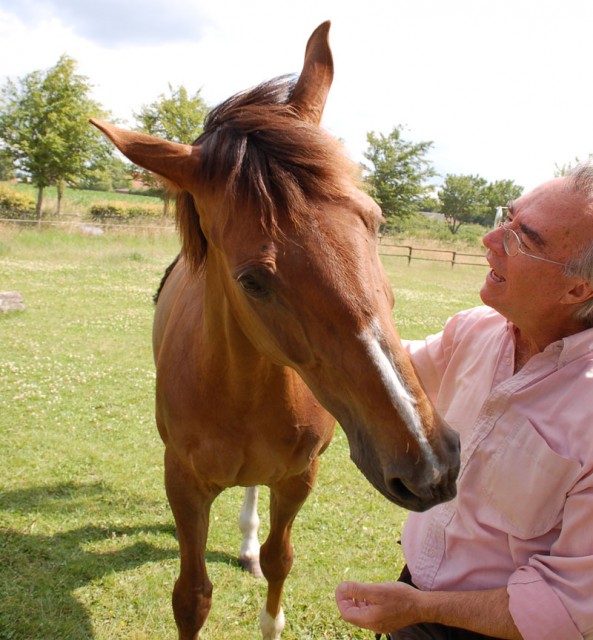
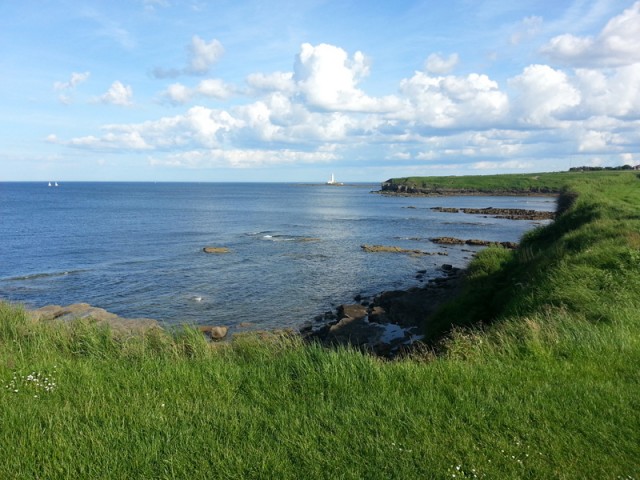



Waw. It’s beautiful :-).
JAW
From EDEN with love
Dear Jason
It is indeed beautiful … as is the rest of life!
See you tomorrow and until then…
Be well!
Andrew
Hi, your essay touched me deeply. I train dogs which I have arrived at rather late in life. The aspect I love the most is teaching the owners to help their dogs make choices and to end up with a family member who is a joy to have around and to take out. I use the 4 P’s : Positive reinforcements , Persuasion , Patience and Persistence . I have read and watched videos of Linda Tellington Jones’ T Touch which she has developed for dogs cats horses and other animals domestic and wild and now applies it to humans .I’d love to enrol in her training scheme , but I don’t have the finances to do that at the moment , however I apply what I learn to my clients dogs.
Congratulations on reaching your goals I admire your determination and dedication.
Regards Mair
Dear Mair
Your story strikes a chord.
Vicki and I actually ended up doing Equine Touch by default. Initially, we were interested in learning T-Touch but our inquiries met a closed door. There was simply no response. So we looked further and found Equine Touch.
Interestingly, the same organisation also offers a version for dogs called Canine Touch and for humans called Vibromuscular Harmonisation Technique (the forerunner of Equine Touch, as it were). If you’re interested, more information is available here:
– http://www.theequinetouch.com;
– http://www.thecaninetouch.com;
– http://www.vhtworld.co.uk.
It sounds as though your dogs and their owners are benefitting from what you have to offer. May they continue to do so.
Be well!
Andrew
Thank you for sharing. I have enjoyed following your journey. Your gift of Equine Touch to horses and humans is so valuable, such a great career and personal move.
I had the good fortune to attend one of Michael Bevilacquas’ workshops many years ago. He is truly remarkable.
Anne-Marie
Dear Anne-Marie
Equine Touch has indeed been a great personal move. Whether it turns out to be a great career move remains to be seen. I shall take it as it comes.
Michael Bevilacqua has just announced his “last” workshop for the third time. This time it will be his contribution first rather than NHE. Perhaps you may want to consider another trip to Saint-Sauveur? More information is available here: http://www.beyondthedreamhorse.ca/workshops.html.
Be well!
Andrew
Hi Andrew
I hadn’t intended to be reading here so long – as I really need to get to my horses, but, as virtually all that you do indicates, foresight seems the way to go. A couple of knee-jerk reactions then
Re: Another shortcoming of this approach lies in the fact that, where the pressure is physical (that is, force), a horse’s natural response is to resist such pressure and not yield to it – if horses are basically flight animals, surely this doesn’t make sense???
Given your rather long essay, my reaction to the question that it is to answer: it is overly wordy – very well written, of course. And I wonder whether your obvious need for verbalization may stand in the way of your goal. Clearly, you felt the need to think things through, but, in the end, you might have reduced the whole thing to a hundred well chosen words and really got your point across. As things stand, the question still is left hanging in the air:-) (Which may have been your wish to promote discussion here, me thinks)
Otherwise, I had thought you were going to explain further the reason for the J- story of your last post. It did come up slightly in terms of help diagnosing problems relating to Pip’s back…)
Nevertheless, three cheers for your amazing commitment and endeavor.
Ian
Dear Ian
Fancy deserting your herd to linger at the computer. I hope your horses call you to account….
Re horses resisting pressure when it takes the form of applying physical force. Try it with one of your horses. Whether you push or pull, the application of force (even relatively gentle) is likely to elicit a knee-jerk resistance to it, at least initially. This is of course very different from frightening or startling the horse, in which case it is likely to flee first before asking questions at a distance.
You are right about the wordy bits. I love language and tend to let it take me to places where I should not go in the interests of concise communication. It must have been my Catholic upbringing. Having been force-fed on the bible, I sometimes think that they could have reduced the gospels to a single word: love. Of course, St Paul objected to that and his verbosity could have been reduced to another word: faith. Not that I wish to compare my ramblings with the scriptures. Far from it. We all just seem to be very human somehow, don’t you think?
The reason for the story of Jason in my last post was simply this: it happened. Profound enough, I guess. Our lessons with him start tomorrow. More on that in the future.
Be well!
Andrew
Hi Andrew
I good first point:-) But as we have been tied down by some rather extreme climatic conditions lately, thought now may serve well to improve our quality of life later.
Thanks for pointing out the second point – I’ll look for it…
Re:We all just seem to be very human somehow, don’t you think? Yes, but therein comes our chattering monkey brain which may be calmed by the contrasting serenity of the horse.
Re: it happened – Yes, there I am looking for reason in our typical cause and effect way of thinking. I shall be interested to read what happens next and what light he shines on your interaction with Pip.
Signing off for now
Ian
Dear Andrew, I would like to comment in my particular manner if that is OK with you..
The first question is “Are you failing your mare?” No, you are not…but then perhaps this is just a matter of speech..or conversational English as I am sometimes told…. ?
“In addition,……..10 days to clear the workload”
Mmmmmm…I would love to talk to you again once you have travelled some more or perhaps many more literal and/or figurative miles on your road to “fulfilment” or “happiness” or “enlightenment” … ultimately finding out that all this knowledge was handy at the time and has served a very good purpose and cause..however, that in the end it is all about the mystical and magical “senses”….
Where this earthly know-ing will have been put on a ledge…still within reach to be consulted when needed…and the “knowing” will have started presenting itself giving life space in many NOW-moments to continuously unfold itself as an ongoing flow of exciting events….
By the way….I looooooooooooooove wacky Englishmen…..
Yeah….one of the things in which our small country proves to be a great country…..bridle paths!!!
Viva La Hollanda ?
The “big picture” ….how BIG is your picture… ?
“Life changing….in which his life was to change”……the ultimate unfolding of life itself…mmm, a truly wonderful and magical gift you were handed, Andrew…and it took you some time to realize that….
“And he was smiling as I was, for we knew that we were one again”… so nice, Andrew…ALL YOU NEED IS LOVE The Beatles did sing that already many years ago….and By Jove did they sell records and become multimillionaires….!!!!
Thank you for your openess, Andrew
Take care
Geerteke
Dear Geerteke
As usual, your comments are challenging. Thank you.
You refer to the following: “ultimately finding out that all this knowledge was handy at the time and has served a very good purpose and cause..however, that in the end it is all about the mystical and magical ‘senses'”.
All too often I encounter people who deny the existence of those “mystical and magical ‘senses'”, insisting on the sole reality of objectively verifiable facts. Less frequently I find myself together with those who insist on the primacy of the mystical and magical.
I tend to view humans as potentially rounded and grounded creatures like the horse, who simply accepts the essential nature of both. It seems to me that any insistence on the primacy of the one is as commendable as the claim that fire is more important than earth, wind and water (or that any of the other elements are paramount).
Of course, I may have entirely missed the point.
Be well!
Andrew
Re:I tend to view humans as potentially rounded and grounded creatures like the horse – that’s a sweet turn of phrase, Andrew, and a simple way of saying something quite profound.